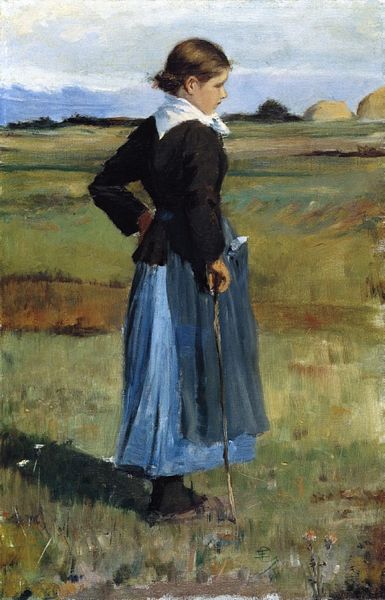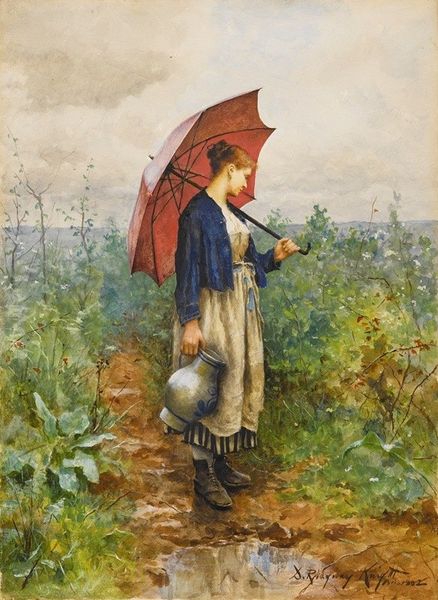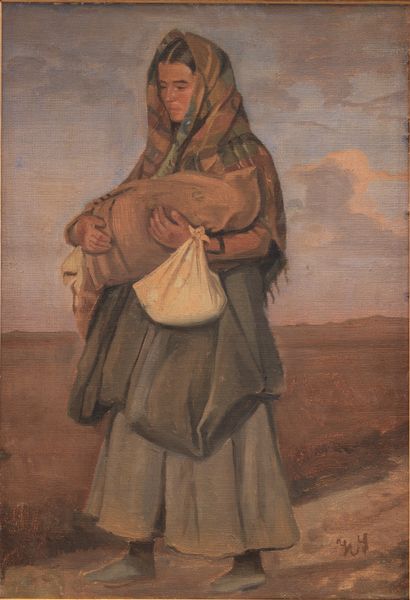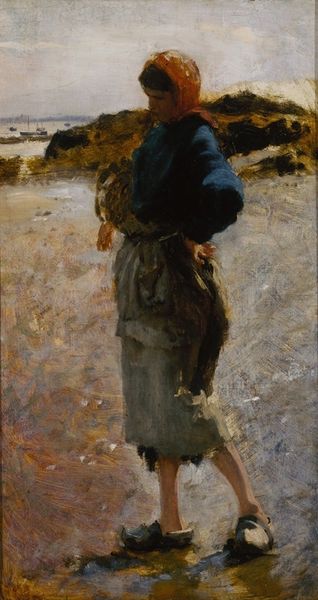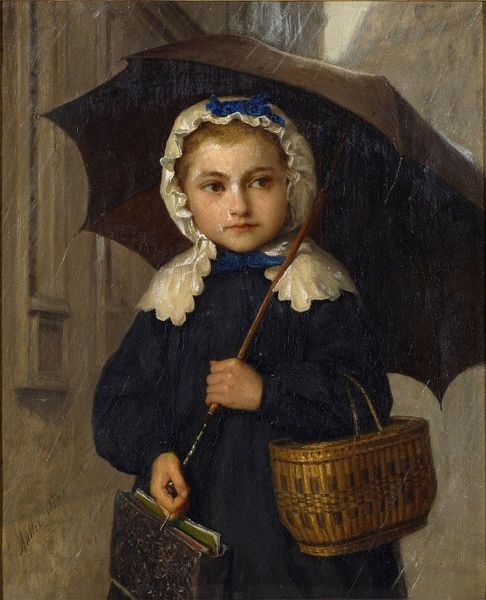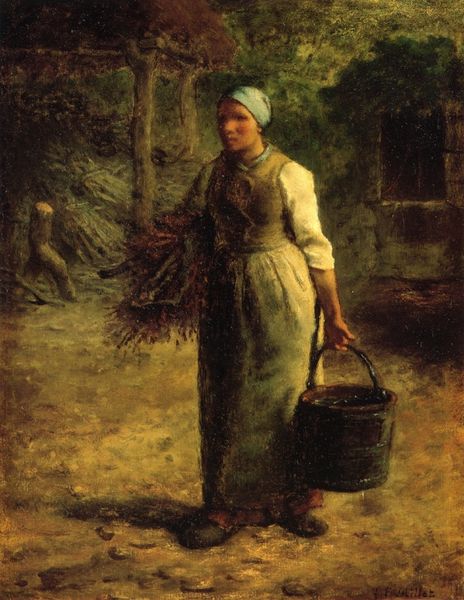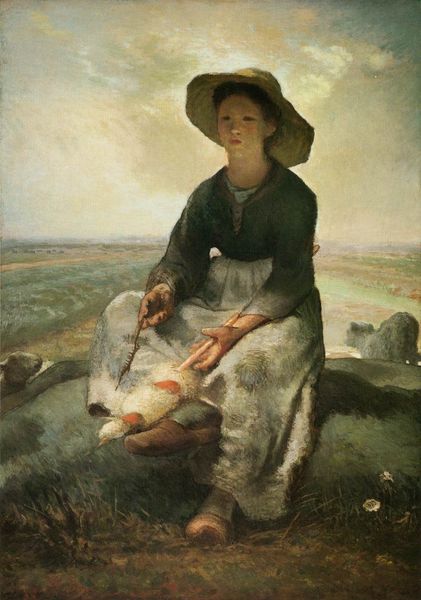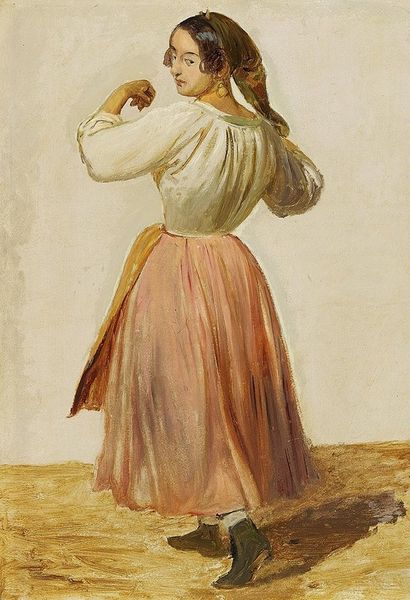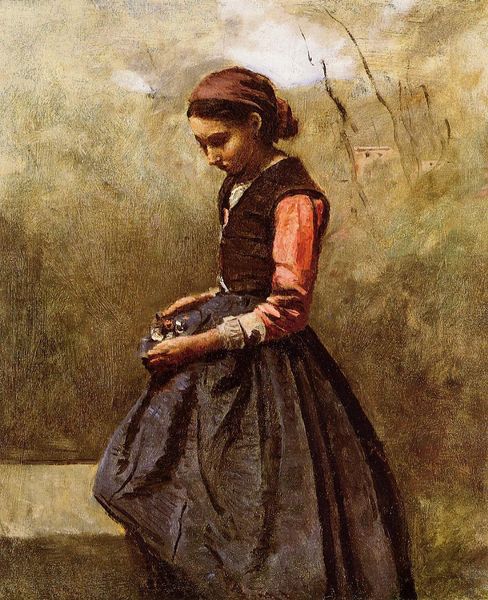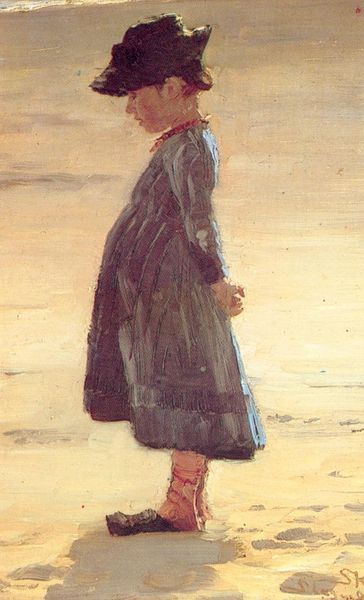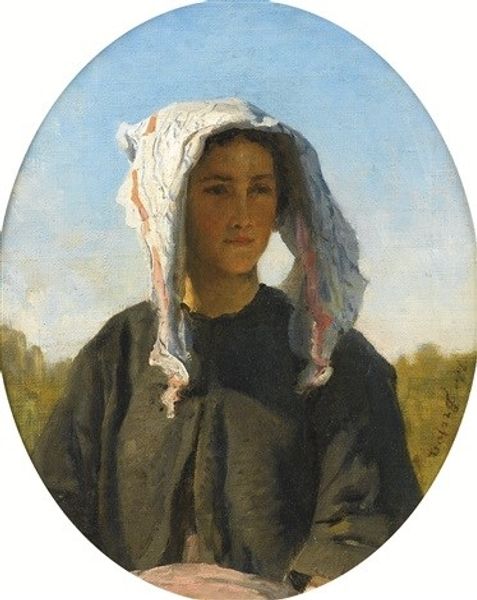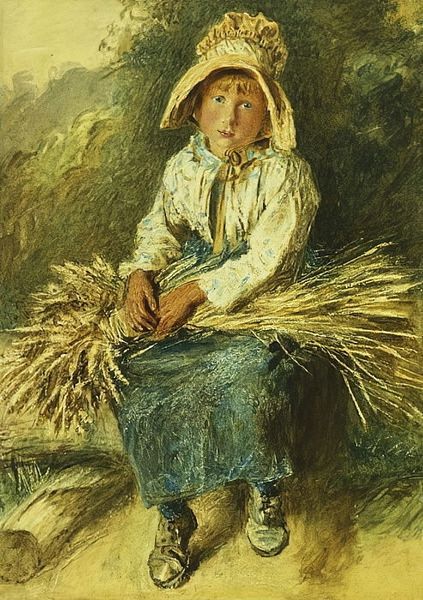
Dimensions: 25 x 19.7 cm
Copyright: Public domain
Editor: Here we have Vasily Perov's "To the Holy Trinity," painted in 1870, using oil on canvas. There's such a palpable sense of hardship in the figure’s expression. I am also fascinated by the choice of materials—the heavy paint seems to mirror the weight she carries. What stands out to you about this piece? Curator: I see the painting as a fascinating document of labor and social structure in 19th-century Russia. Consider the materials: oil paint, relatively accessible, allowed Perov to create a realistic, almost photographic, depiction of peasant life. The brushstrokes themselves, thick and visible, become a form of labor mirroring the woman's own toil. Editor: That's a great point about the visible brushstrokes mirroring labor. I hadn't considered the medium itself as a form of commentary. Do you think the fact that he's using "high art" materials to depict a very "low art," every day subject, elevates her? Curator: Exactly! This is where Perov challenges traditional boundaries. The woman's simple clothing and worn shoes speak to a life of poverty, yet she's rendered with the same care and attention typically reserved for portraits of the wealthy or noble. He's using the means of art production – the canvas, the oil paints – to give visibility and, arguably, dignity, to a class often overlooked in art. Is she on her way to a place of worship as the title suggests, or is she simply burdened with other everyday errands? What does this distinction imply regarding her access to spiritual solace? Editor: That really reframes the piece for me. Thinking about it in terms of the means of production and the statement that Perov is making with his material choices adds a new layer of depth. Curator: Indeed, the painting transcends a simple portrait. It's a commentary on class, labor, and the very act of representation. Examining art through a materialist lens forces us to consider whose stories are being told and how. Editor: Thank you. I’m definitely looking at this, and other paintings, in a different way now. Curator: I’m glad to have shed some light, this piece demonstrates how attention to materials reveals the social and historical currents that shape artistic production.
Comments
No comments
Be the first to comment and join the conversation on the ultimate creative platform.
